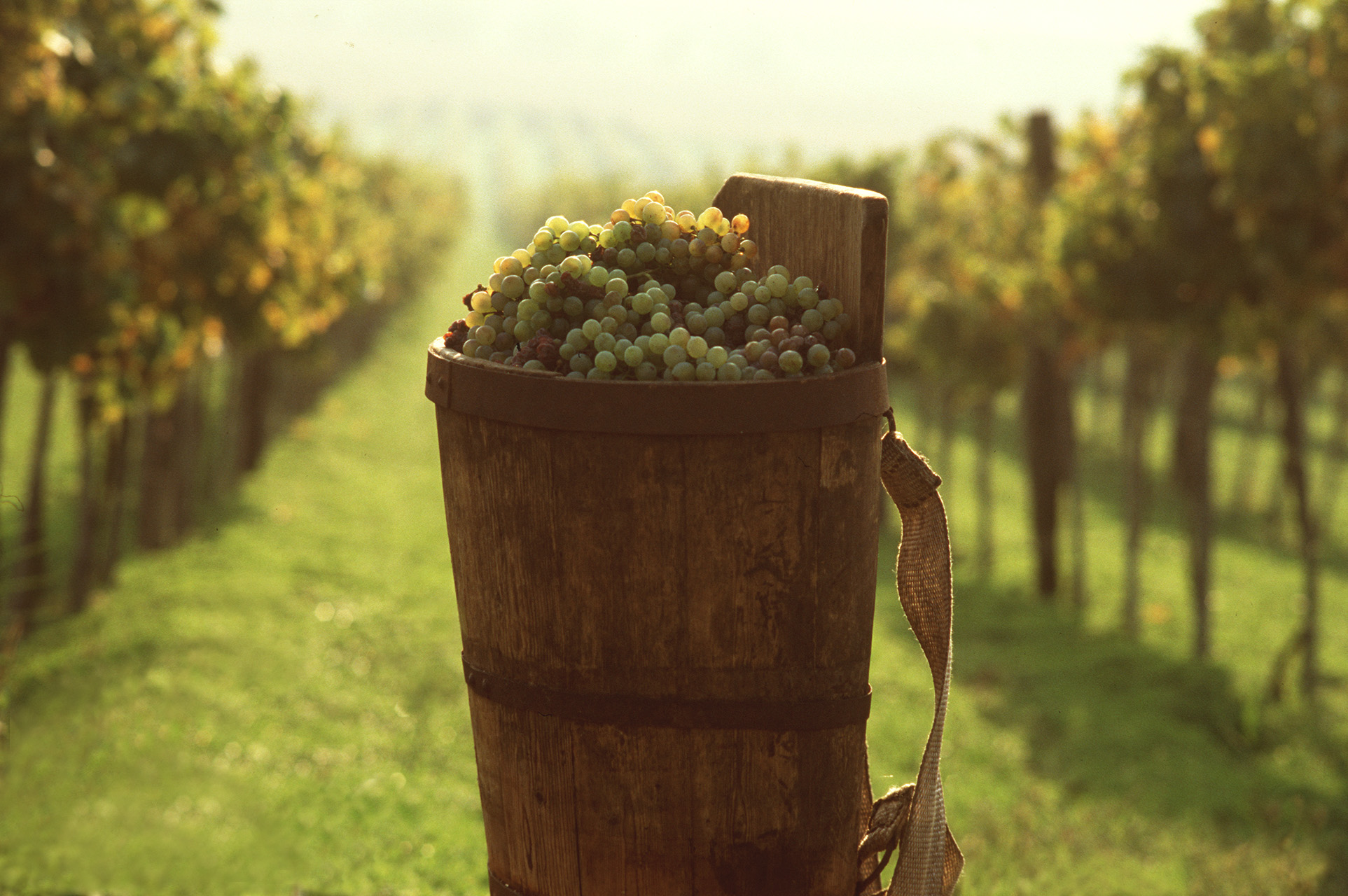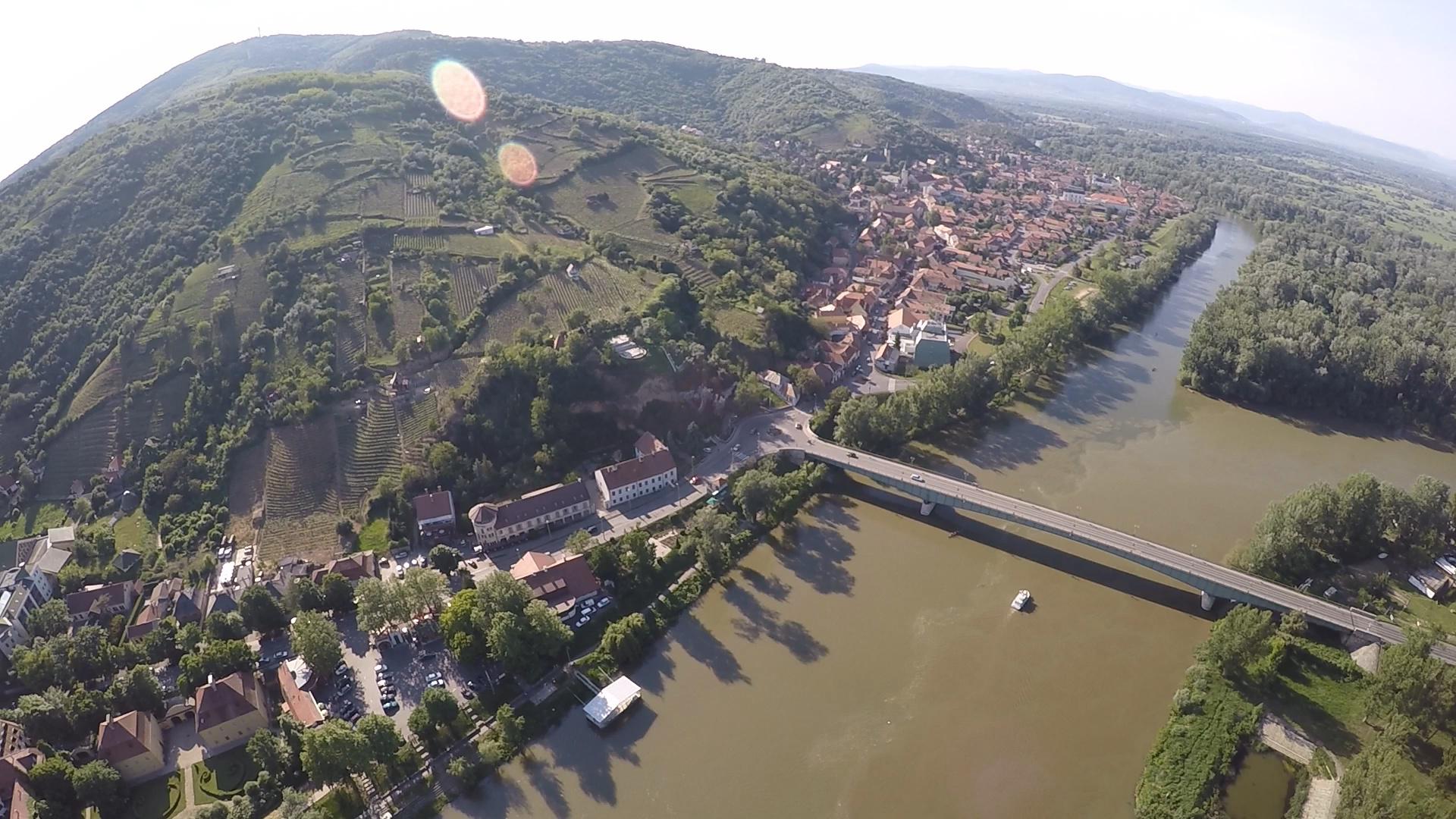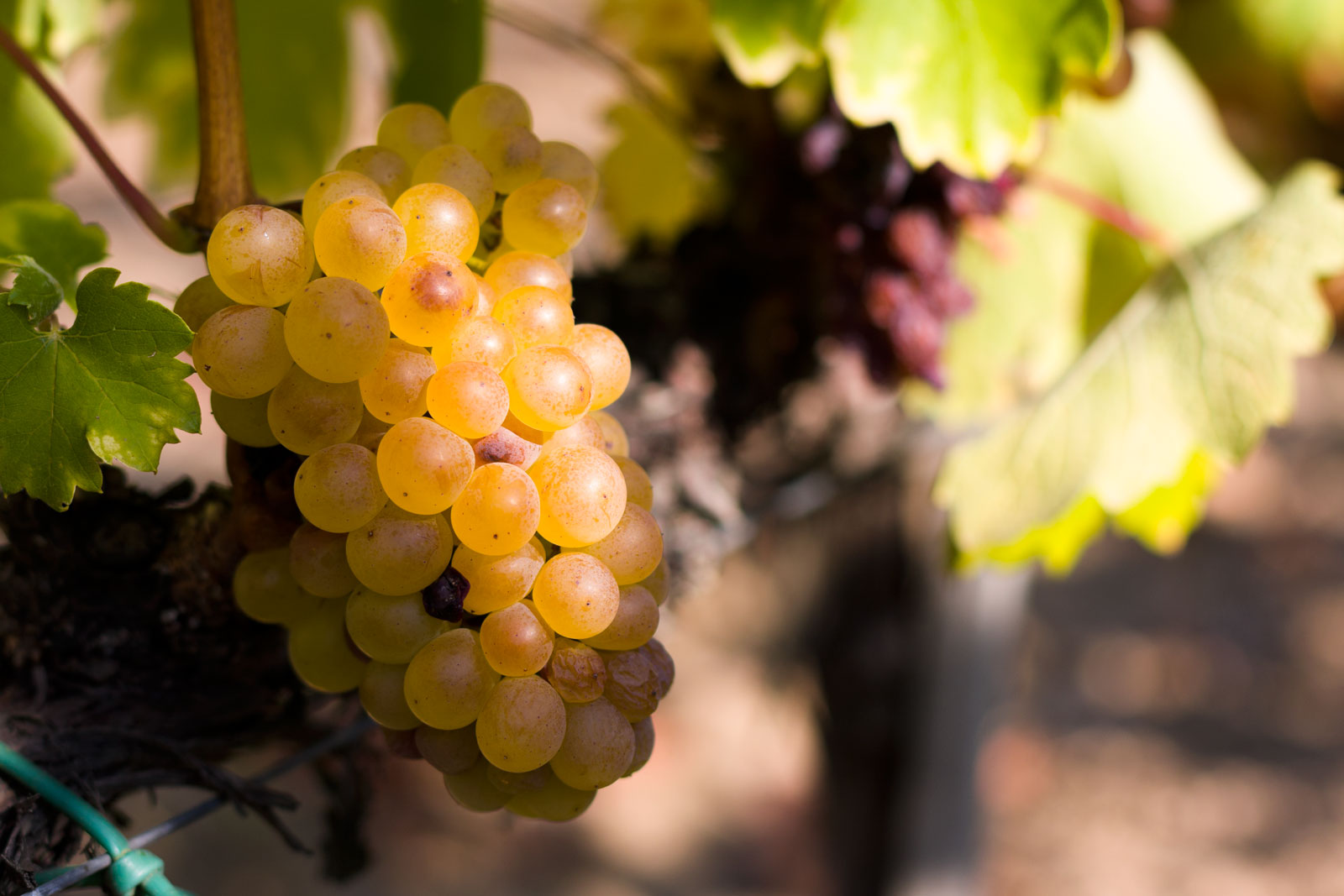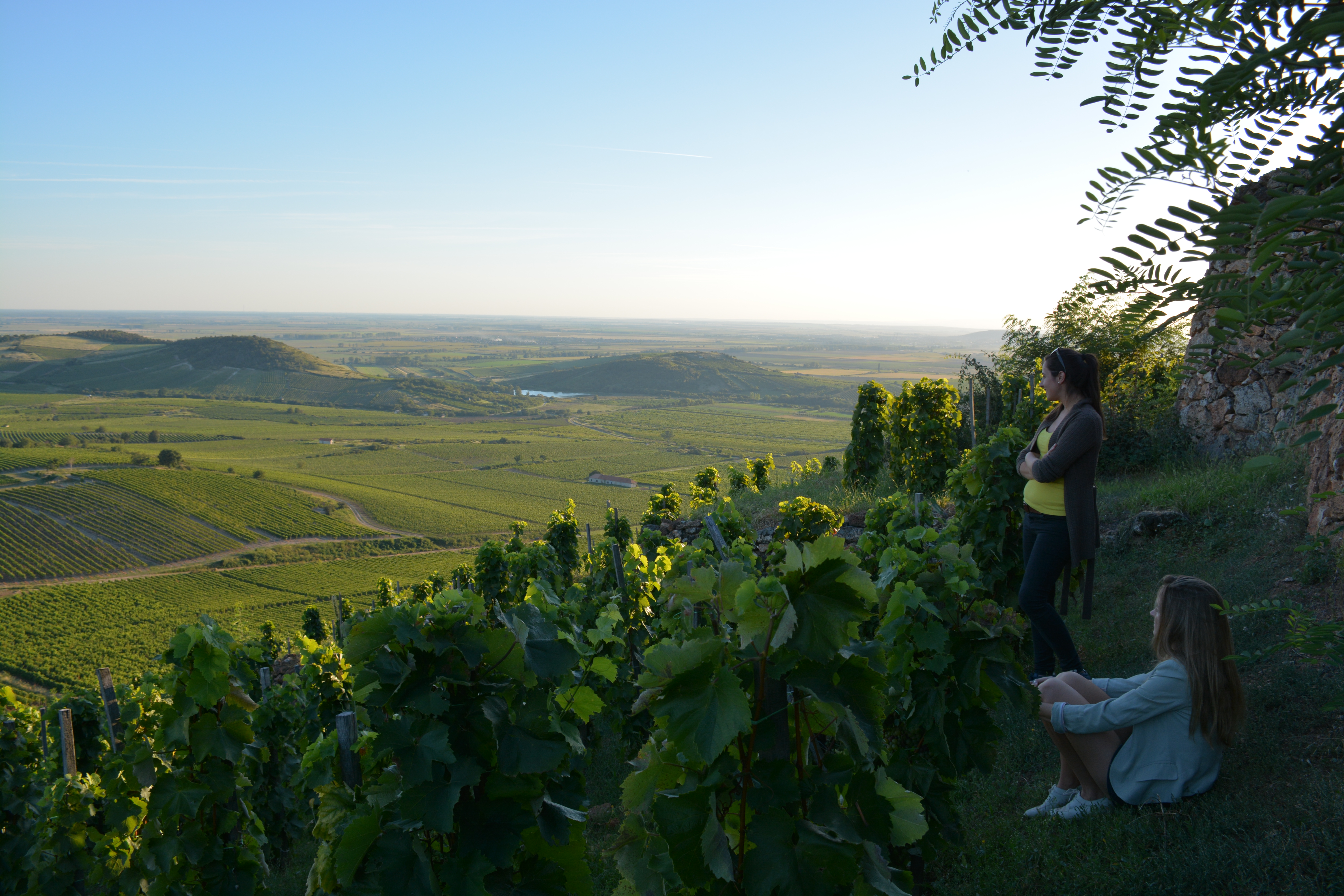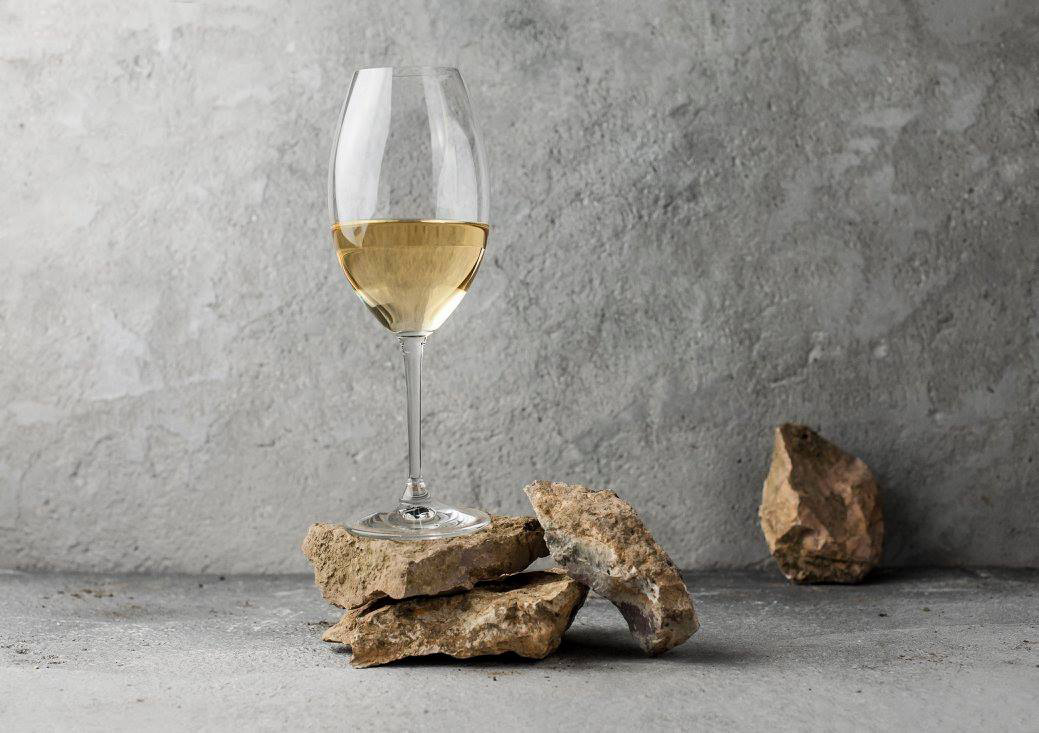n
If not familiar, Furmint is arguably Hungary’s greatest white grape. It’s the mainstay of the country’s legendary sweet botrytis wines from the region of Tokaj. These historic ambrosias have been made for centuries and were in their time vinous treasures of the courts of czars and other European nobility. But all that changed with the end of WWII and a socialist regime in power for over half of the 20th century. During that time the region of Tokaj and its historic wines took a major hit in both quality and notoriety.
After the fall of communism in Eastern Europe in the early ‘90’s there was major effort and investment—both foreign and domestic—in the great historic properties of Tokaj. What followed was a renaissance in wine quality that was enthusiastically received by the wine press but ultimately disappointing in regards to sales due to lack of demand worldwide. But over the last decade a phenomenon has taken place in this region justly famed for its devotion to sweet wines: making dry wines from the same top sites that have historically been used for botrytis wines.
This is not the first time sweet has become dry. Two other examples quickly come to mind: The Douro Valley of Portugal where superb dry wines are now produced from Touriga Nacional and Touriga blends traditionally used to make Port. Germany is yet another example of sweet morphing to dry in the form of the great Grosses Gewächs wines made from Riesling and other grapes sourced from the country’s top vineyards sites–the same vineyards that have traditionally been used to produce fruity-styled wines with residual sugar.
Such is the case for Hungary and the Furmint grape. Today high quality dry wines are now being made from the top sites not only in Tokaj, but to a lesser extent in the Csopak region on the north shore of Lake Balaton. It goes without saying that both are utterly unique places in the world of wine.
Tokaj is the oldest quality winegrowing region on the planet. It’s also home to the world’s oldest wine classification that dates back to the 1720’s when the region’s vineyards were first graded according to quality. The Tokaj classification predates Port (1756) and Bordeaux (1855). The Tokaj region is also one of the world’s most beautiful wine places; it was granted UN World Heritage site status in 2002.
Climatically the region is sheltered by the Carpathian Mountains and generally has a warm continental climate with long humid autumns, perfect conditions for the formation of botrytis needed to produce great dessert wines. A majority of the 12,500 acres under vine in the region are planted to Furmint.
One of the major factors that makes Tokaj so unique is geology in the form of intense vulcanism–over 400 volcanos in the area–not to mention intense post-volcanic geyser activity throughout the region. This makes for a tremendous range of soil types from practically every type of volcanic soil– rhyolite, rhyodacite, dacite, and andesite—to tufa/limestone, clay, schist, loess, limestone, red and grey sandstone, dolomite, marl, and various stone outcroppings.
Csopak
The smaller Csopak district spans a 29-mile-long strip between Zánka and Balatonalmádi on the northern shore of Lake Balaton. With 15,000-plus acres under vine it too is a diverse wine environment with a wide range of microclimates and soils that range from volcanic to loess, limestone, sandstone, dolomite, and marl. Here also Furmint is the dominant variety along with a host of other grapes.
The Furmint Grape
The first documentation of a wine that could have contained Furmint dates back to 1597 from the Hétszölö vineyard in Tokaj. It’s now thought to have been a blend. The first written record of a wine with the name “Furmint” dates back to 1611. Like other grapes—most notably Syrah—the origins of the Furmint grape were long shrouded in lore. One legend had the grape being brought to Tokaj in the early 12th century by Italian missionaries. Another legend told of an Italian soldier named “Formet” introducing the grape to the court of Maria Theresa in Tokaj in the 17th century. But any so-called Italian connections were considered doubtful because Furmint has no genetic link to any Italian variety.
Today we know that the origins of the grape can be traced to the Tokaj region because of the intense genetic variation in the region. Recent DNA testing has shown Furmint to be the offspring of Gouais Blanc and a now-extinct variety. DNA work has further confirmed that Furmint is a half-sibling to almost 80 grapes including Chardonnay, Gamay Noir, Riesling and many more. It’s also the parent of two other important Tokaj grapes, Hárslevelű and Zeta.
Viticultural Characteristics
In the vineyard Furmint buds early and is prone to spring frost damage. It also ripens late in the season developing loose bunches of medium-sized, thick-skinned berries making it susceptible to not only to botrytis, but bunch rot and powdery mildew as well. The latter is important because the production of dry Furmint requires severe selection in the winery as botrytis fruit simply does not work. While the grape shows good drought resistance it will easily give high yields if not carefully monitored and cropped. But what makes the grape so versatile is a combination of the potential for late ripening and achieving high sugar levels while maintaining high natural acidity—not unlike Riesling or Chenin Blanc. The combination of high acidity with high phenolics gives the wines excellent potential to age regardless of style.
Ultimately—and singularly important to the sommelier—Furmint as wine is transparent and an excellent vehicle for terroir. Bottlings can vary dramatically in style from light to very full-bodied and from bone dry to lusciously sweet with botrytis character. Like Assyrtiko from Santorini, un-oaked and oaked wines are equally successful.
The last 25 years have seen remarkable change in the Hungarian industry in both vineyard and winery. In viticulture, old-school practices dating from the socialist regime included wide row planting for use of tractors and single stake planting for ease of farming and high yields. Now vineyard practices are transitioning to higher vine densities—up to 7,000 plus plants per hectare—and the use of Guyot or Cordon training.
In the winery the move from traditional to modern has also been dramatic. Native ferments in old wood without temperature control and a general overall lack of winery hygiene has been replaced with stainless steel or neutral uprights, temperature-controlled ferments on both native and cultured yeasts, increased use of SO2, and drastically improved overall winery hygiene. Needless to say, wine quality has increased dramatically because of better practices in the winery.
The Dry Furmint Revolution
Why is the world just now learning about Furmint as an important grape not to mention its potential to make world-class dry wines? There is no one answer to the question as the reasons are many. The long-standing history and tradition for botrytis sweet wines and emphasis on mass production during the socialist era are major factors. One could argue that the catalyst for change came in the form of new technology, improved winemaking expertise, and considerable investment in historical Tokaji properties after the fall of communism. But two final phenomena also have to be considered: the lack of demand for top quality sweet wines worldwide and the move to dry wines by consumers in Hungary to the extent that over 60% of all Furmint-based wines are now dry.
Rediscovering Top Sites
Another factor in the Furmint renaissance has to do with site selection. The boom in popularity of dry Furmint has led to the rediscovery of historically renowned sites in Tokaj’s two most important sub-regions: Tokaj Hill and Mád Basin. In the Tokaj Hill region sites such as Szil-völgy, Hétszőlő, Nagyszőlő, Szarvas, Mézes-mály, Zafir and Terézia are now being used for top quality single-vineyard dry wines. Soils in the Tokaj Hill region are loess-based with quartz and other minerals, and wines from the vineyards are often called “loess wines.” Generally speaking, Tokaj Hill wines tend to be lighter in style with tart green fruits and high acidity.
By contrast, soils in the Mád Basin are volcanic-based and the wines tend to be richer in style and intensely mineral-driven allowing for longer aging. Top sites in Mád Basin include Úrágya, Szent-Tamás, Betsek, and the Király Vineyard. All produce benchmark wines on a regular basis.
In the Glass – Markers for Tasting
Lighter-style wines display Pippin apple, under ripe pear, and tart citrus with white floral, green botanical notes (watercress, mint, parsley, etc.), and wet stone mineral.
Richer wines from riper fruit offer riper orchard fruits, tropical and melon, sweet citrus, mixed floral, green botanical notes, and pronounced mineral.
Structure: alcohol by volume ranges between 12-15% depending on harvest timing and the style of wine; the acidity is always very high with light to medium phenolics.
Malo-lactic is often used in production and the wines do well with it because of the grape’s high natural acidity.
Oak: as mentioned above, Furmint is one of those rare white grapes that do equally well with both with and without oak. It’s important to note that the oak is sourced almost entirely in country most notably the Zemplén forest which has been used for barrel production for centuries. In terms of style, I find Hungarian oak to be slightly spicier and more exotic than French Oak but not as dominant as American Oak.
Glassware and Proper Serving Temps
All-purpose white wine glasses do well especially with lighter wines. I’ve used the Riedel Vinum Chardonnay Extreme glasses for the richer, oaked wines. Also know that Riedel does have a varietal Furmint glass. As far as serving temperatures are concerned, lighter wines do best served between 45°- 50° F with richer wines poured at between 50°- 55° F.
Here is a flight of dry Furmints I recently tasted during a seminar at SommCon in San Diego. It shows both the versatility and wide range of styles the grape can achieve. With the exception of the second wine, all are from the Tokaj region.
1. 2014 Béres Estate Furmint, Tokaj 13% SRP $19
Stainless steel-fermented and aged – cork finished
S: medium yellow with green
N: evolved in style; dried quince, pear, and lime with white flower, straw, light botanical notes, mineral, and no wood
P: medium-bodied and very dry; turns tart on the palate with underripe green fruits, light green herb, and pronounced mineral. The finish is long, tart, and balanced with light phenolics.
5/1/4/6/1/1/4+*
2. 2013 St. Donat Márga Furmint, Csopak 12.5% SRP $24
Stainless steel and neutral barrel with no added yeast – screwcap
S: light yellow with green
N: initially some SO2; fresher, lighter nose with ripe apple, peach/apricot, sweet and tart citrus, white floral, straw/hay/green leaf, and wet stone
P: very tart and bone dry; tart citrus – lemon and grapefruit pith—and slight green notes dominate with mineral and slight phenolics.
5/1/4/6/1/1/5
3. 2013 Kvaszinger Estate Furmint, Tokaj 14% SRP $22
Neutral oak-fermented and aged with no added yeast – cork finished
S: deep straw green
N: honey, orange, apricot, citrus blossom, straw/dried grass, dried green botanicals, and stone/mineral
P: richer, riper style compared to the first two wines; very dense and concentrated but the fruit turns tarter on the palate with lemon/lime and Pippin apple. Mineral also stronger on the palate with botanical notes and moderate phenolics on the very long finish.
5+/1/5/6/1/1/5
4. 2013 Holdvölgy “Vision,” Tokaj 13.5% SRP $26
Blend of 65% Furmint, 25% Hárslevelű, 10% Kabar – cork finished
S: pale yellow green
N: floral and herbal with tart fruit–apple, quince, and yellow grapefruit—and wet stone
P: initially very forward fruit but offset by intense minerality and high acidity; moderate phenolics on the finish. Very long and persistent
5-6/2/5/6/1/1/5
5. 2012 Erzsébet Zafír, Tokaj 13.5% SRP $24
Single vineyard; blend of 65% Furmint and 35% Hárslevelű – cork finished
Neutral barrel-fermented and aged with no added yeast
S: deep straw green
N: green apple/under ripe green pear, lime, white peach, white floral, green botanicals, and mineral
P: softer rounder mouthfeel (used wood) but still very tart orchard with pronounced minerality on the finish.
5/1/4/6/1/1/5
6. 2011 Béres Lőcse, Tokaj 15% SRP $25
Single vineyard, cooler site; barrel-fermented and aged – cork finished
S: medium yellow gold
N: ripe yellow apple, Bosc pear, yellow peach, tangerine, and mango with pronounced floral notes, smoke, and light spice
P: whiff of heat on first taste; very ripe on the palate but not cloying (high acidity!). Stone fruits, orange, and apple puree; mineral comes through on the palate. There’s more wood on the palate but it doesn’t obstruct and actually compliments the wine.
6/2/5-6/6/1/4/5-6
7. 2013 Majoros Deák Furmint, Tokaj 14% SRP $22
Single vineyard; older vines (30 years), loess topsoil, volcanic bedrock. Neutral barrel-fermented and aged for 12 months with extended skin contact; screwcap
S: deep yellow green
N: lots of wood with very ripe pear, peach, tropical and sweet citrus. Also lily, pine/botanical, lees/beer, and wood spice. Very complex nose.
P: very ripe and concentrated with more tart fruit on palate; mineral shows strongly as does a slight bitterness from combination of wood and phenolics.
6/2/5-6/6/1/5/5+
8. 2012 Barta Old King Furmint, Tokaj 13.3% SRP $38
Single vineyard, volcanic soil with no topsoil; no added yeast, neutral barrel-fermented and aged; cork finished
S: deep straw green
N: ripe pear, lemon-lime, yellow grape fruit, white floral, botanicals, and stony mineral
P: ripe orchard fruits offset by tart citrus with more pronounced mineral and medium phenolics
5/1/4-5/6/1/1/5
9. 2013 Degenfeld Furmint, Tokaj 12.5% SRP $18
Off-dry style; stainless steel fermented and aged; cork finished
S: medium straw green
N: pear, lime, green botanicals-mint, floral, and mineral
P: off-dry to slightly sweet in style; like a lime sweet tart with white peach, green notes, wet stone; slight phenolics. Auslese-level sweetness matched by high acidity.
5/4/4/6/1/1/4-5
*About those numbers…
To avoid using numeric scores when writing tasting notes I use a system for profiling wine developed by good friend and fellow M.S., Peter Granoff. During his tenure at the helm of Virtual Vineyards in the ‘90’s Peter devised a system to convey the most important information about every wine in the company’s portfolio. His system used seven criteria to profile every wine: intensity of flavor, body, sweetness/dryness, acidity, tannin, oak, and complexity. Further, these seven criteria were represented in one-through-seven increments with one representing least/none and seven most or maximum. For example, with sweetness or dryness Peter’s chart lists “bone dry” at one end with dessert sweet at the other; for intensity of flavor the chart ranges from “delicate” at number one to “intense” at number seven. And so on. How effective was Peter’s system? Virtual Vineyards—which became the original wine.com—sold over $50 million of wine in five years using the system–and without ever using a single numerical score. Enough said.
nn
